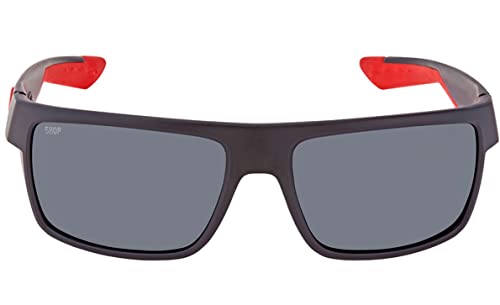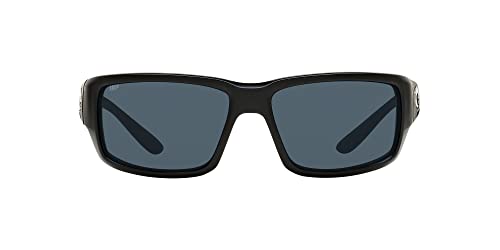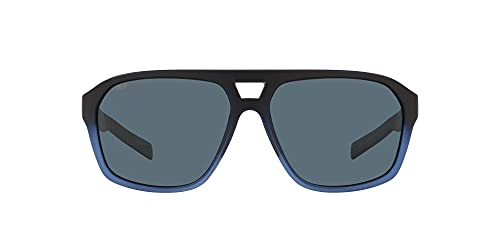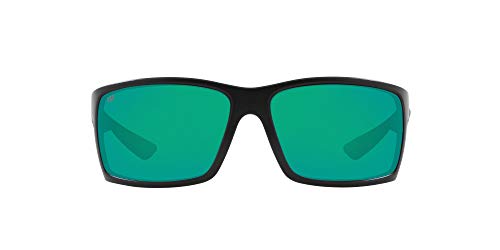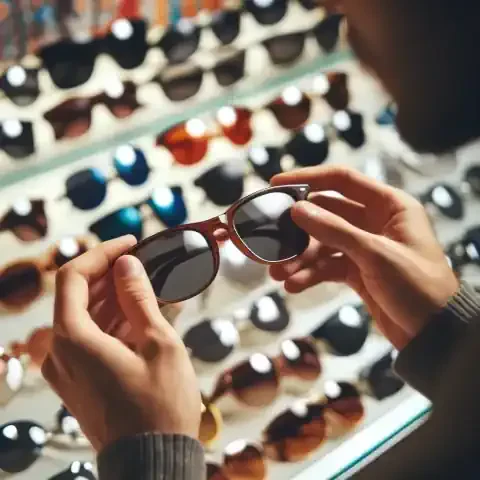Introduction
Sunglasses serve as more than just a fashion accessory; they are essential tools in safeguarding our eyes from the harmful effects of ultraviolet (UV) radiation and glare. With prolonged exposure to sunlight, our eyes become vulnerable to a range of conditions, including cataracts, macular degeneration, and photokeratitis. Thus, wearing sunglasses is crucial for maintaining optimal eye health and preventing potential vision problems.
However, not all sunglasses are created equal. While basic lenses may provide some protection from UV rays, advanced coatings can significantly enhance their functionality. Lens coatings offer a myriad of benefits, ranging from improving clarity and reducing glare to enhancing durability and ease of maintenance.
In this article, we delve into the world of sunglasses lens coatings to unveil their diverse advantages. By exploring different types of coatings and their specific benefits, we aim to equip readers with the knowledge needed to make informed decisions when selecting sunglasses. Whether you're seeking superior UV protection, enhanced visual clarity, or increased durability, this exploration will guide you through the array of options available, ensuring your sunglasses not only complement your style but also prioritize the health and well-being of your eyes.
UV Protection Coatings
Explanation of UV Radiation and Its Harmful Effects on Eyes
UV radiation, emitted by the sun, consists of UVA, UVB, and UVC rays. While the Earth's atmosphere filters out most UVC radiation, UVA and UVB rays still penetrate the atmosphere and pose significant risks to eye health.
Prolonged exposure to UV radiation can lead to various eye conditions, including:
Cataracts: UV exposure contributes to the development of cataracts, a clouding of the eye's natural lens, leading to blurred vision and eventual vision loss if left untreated.
Macular Degeneration: UV radiation is also linked to age-related macular degeneration (AMD), a leading cause of vision loss in adults over the age of 50, affecting central vision and making it difficult to read, drive, or recognize faces.
Photokeratitis: Commonly known as "sunburn of the eye," photokeratitis is a painful condition caused by overexposure to UVB rays. Symptoms include redness, tearing, sensitivity to light, and a gritty sensation in the eyes. While usually temporary, repeated episodes can lead to long-term damage.
Discussion on How UV Protection Coatings Block Harmful UV Rays
UV protection coatings are specially designed to block harmful UV rays from reaching the eyes. These coatings are applied to sunglass lenses, acting as a barrier that absorbs or reflects UV radiation before it can penetrate the eye.
These coatings work by selectively filtering out UV wavelengths while allowing visible light to pass through, ensuring clear vision without compromising protection. By blocking both UVA and UVB rays, these coatings provide comprehensive defense against the harmful effects of UV radiation.
Benefits:
Reduced Risk of Cataracts and Other Eye Diseases: By effectively blocking UV radiation, sunglasses with UV protection coatings help reduce the risk of developing cataracts, macular degeneration, and other eye diseases associated with UV exposure.
Protection Against Photokeratitis (Sunburn of the Eye): UV protection coatings shield the eyes from the intense UVB rays responsible for causing photokeratitis, preventing painful sunburn-like symptoms and preserving ocular health.
Prevention of Premature Aging Around the Eyes: Continuous exposure to UV radiation can accelerate the aging process of the delicate skin around the eyes, leading to wrinkles, fine lines, and sagging. Sunglasses with UV protection coatings not only safeguard the eyes but also help prevent premature aging, maintaining a youthful appearance.
Polarized Coatings
Definition and Explanation of Polarization
Polarization refers to the alignment of light waves along a specific orientation, typically horizontal or vertical. When light reflects off flat surfaces such as water, roads, or snow, it becomes polarized horizontally, resulting in glare. This glare can impair vision, cause discomfort, and even pose safety risks, particularly when driving or engaging in outdoor activities.
How Polarized Coatings Eliminate Glare and Enhance Visual Clarity
Polarized coatings are designed to counteract the effects of glare by selectively blocking horizontally polarized light. These coatings contain microscopic molecules that act as vertical filters, allowing only vertically polarized light to pass through the lenses. As a result, glare from reflective surfaces is significantly reduced or eliminated, providing clearer and more comfortable vision.
By eliminating glare, polarized coatings enhance visual clarity, allowing wearers to see objects more sharply and accurately. This is particularly beneficial in bright conditions, where glare can obscure details and cause visual discomfort.
Benefits:
Improved Visibility in Bright Conditions, Such as Sunny Days or Near Water: Polarized coatings are highly effective in reducing glare caused by sunlight reflecting off surfaces such as water, sand, snow, or roads. By minimizing glare, these coatings improve visibility and enhance contrast, enabling wearers to see more clearly even in the brightest outdoor environments.
Reduced Eye Strain and Fatigue: Glare not only impairs vision but also strains the eyes, leading to fatigue and discomfort, especially during prolonged exposure to bright sunlight. By eliminating glare, polarized coatings reduce the need for squinting and eye strain, allowing for more relaxed and comfortable vision.
Enhanced Contrast and Depth Perception: Polarized coatings enhance contrast by reducing the amount of scattered light that enters the eye. This results in sharper and more defined images, as well as improved depth perception, making it easier to distinguish objects and judge distances accurately. Whether navigating a mountain trail or driving on a sunny highway, enhanced contrast and depth perception provided by polarized coatings contribute to safer and more enjoyable visual experiences.
Anti-Reflective Coatings
Explanation of What Causes Glare on Lenses
Glare on lenses occurs when light reflects off the surface of the lens, creating visual disturbances that can impair vision and cause discomfort. This reflection occurs due to differences in the refractive index between the air and the lens material, as well as inconsistencies in the lens surface.
How Anti-Reflective Coatings Minimize Reflections and Glare
Anti-reflective (AR) coatings are thin, multi-layered coatings applied to lens surfaces to reduce reflection and minimize glare. These coatings work by altering the refractive index of the lens surface, allowing more light to pass through and less to be reflected back.
By minimizing reflection, AR coatings increase light transmission through the lenses, resulting in clearer vision and improved visual acuity. Additionally, these coatings reduce the halo effect often associated with glare, enhancing contrast and clarity of vision, particularly in low-light conditions.
Benefits:
Clearer Vision, Especially in Low-Light Conditions: AR coatings are highly effective in improving vision in low-light environments by increasing light transmission through the lenses. This results in enhanced brightness and clarity, allowing wearers to see more clearly and comfortably, even in dimly lit settings such as indoor spaces or overcast conditions.
Reduction of Distracting Reflections for Better Focus: By minimizing reflections on the lens surface, AR coatings help reduce glare and eliminate distracting visual disturbances. This allows wearers to maintain better focus on their surroundings without being hindered by glare from artificial lighting, computer screens, or oncoming headlights while driving at night.
Improved Aesthetics with Virtually Invisible Lenses: AR coatings not only enhance visual performance but also improve the aesthetics of eyewear. These coatings are designed to be virtually invisible, ensuring that the lenses appear clear and unobstructed. As a result, wearers can enjoy the benefits of glare reduction and improved vision without compromising the appearance of their eyeglasses or sunglasses.
Scratch-Resistant Coatings
Description of Common Causes of Lens Scratches
Lens scratches can occur due to various factors encountered in everyday use. Common causes include:
Abrasive Contact: Contact with abrasive surfaces such as rough clothing, countertops, or sandy environments can scratch the surface of lenses.
Storage: Improper storage of sunglasses without protective cases or in crowded pockets or bags can lead to friction and scratches.
Cleaning: Incorrect cleaning methods, such as using rough or dirty cloths or tissues, can introduce fine scratches on the lens surface.
Impact: Accidental drops or impacts can cause visible scratches or chips on the lenses, compromising their optical quality.
How Scratch-Resistant Coatings Enhance Lens Durability
Scratch-resistant coatings are thin, hard layers applied to the surface of lenses to increase their resistance to scratches and abrasions. These coatings are typically composed of materials such as silicon dioxide or titanium dioxide, which form a protective barrier that reinforces the lens surface.
By incorporating scratch-resistant coatings, sunglass lenses become more durable and resilient to everyday wear and tear. These coatings effectively minimize the appearance of scratches, preserving the optical clarity and integrity of the lenses over time.
Benefits:
Prolonged Lifespan of Sunglasses: Scratch-resistant coatings significantly extend the lifespan of sunglasses by providing an extra layer of protection against scratches and abrasions. This ensures that the lenses remain in optimal condition for longer periods, maintaining their functionality and appearance.
Maintained Optical Clarity by Preventing Scratches from Impairing Vision: By preventing scratches from forming on the lens surface, scratch-resistant coatings help maintain optical clarity and visual acuity. With minimal distortion caused by scratches, wearers can enjoy clear and unobstructed vision, enhancing their overall visual experience.
Cost-Effectiveness by Reducing the Need for Frequent Replacements: Sunglasses with scratch-resistant coatings offer excellent value for money by reducing the need for frequent replacements. With enhanced durability and longevity, wearers can enjoy prolonged use of their sunglasses without the inconvenience and expense of replacing scratched lenses. This not only saves money but also minimizes environmental impact by reducing waste.
Hydrophobic and Oleophobic Coatings
Explanation of Hydrophobic and Oleophobic Properties
Hydrophobic and oleophobic coatings are designed to repel water and oil, respectively, from the surface of sunglass lenses. These coatings are engineered to alter the surface chemistry of the lenses, creating a barrier that prevents water, oils, and other substances from adhering to the surface.
How These Coatings Repel Water, Oils, and Smudges
Hydrophobic coatings work by reducing the surface tension of water droplets, causing them to bead up and roll off the lens surface rather than spreading out and clinging to it. Similarly, oleophobic coatings create a non-stick surface that repels oils and prevents them from adhering to the lens.
The combination of these properties results in lenses that are highly resistant to water, oils, and smudges. As a result, moisture, fingerprints, and other contaminants are easily shed from the lens surface, ensuring clearer vision and easier maintenance.
Benefits:
Improved Visibility in Rainy or Humid Conditions: Sunglasses with hydrophobic coatings offer improved visibility in rainy or humid conditions by repelling water droplets from the lens surface. This prevents water from obstructing vision and causing distortion, allowing wearers to maintain clear and unobstructed sight even in inclement weather.
Easy Cleaning and Maintenance: The hydrophobic and oleophobic properties of these coatings make cleaning and maintenance a breeze. Water and oil-based contaminants are easily wiped away with a soft cloth, leaving the lenses clean and streak-free. This simplifies the cleaning process and ensures that lenses remain clear and free from residue.
Resistance to Fingerprints and Smudges for Clearer Vision: Hydrophobic and oleophobic coatings also provide resistance to fingerprints and smudges, ensuring clearer vision and reducing the need for frequent cleaning. With lenses that repel oils and other substances, wearers can enjoy prolonged periods of clear and unobstructed vision without the annoyance of smudges or fingerprints obscuring their view.
Different Sunglasses Lens Coatings
In conclusion, the benefits of different sunglasses lens coatings offer a comprehensive array of advantages that cater to various needs and preferences. From UV protection coatings to scratch-resistant, polarized, anti-reflective, and hydrophobic/oleophobic coatings, each type serves a specific purpose in enhancing the functionality, durability, and comfort of sunglasses.
UV protection coatings shield the eyes from harmful UV radiation, reducing the risk of eye diseases and premature aging. Polarized coatings minimize glare, improve visibility in bright conditions, and reduce eye strain. Anti-reflective coatings enhance visual clarity by minimizing reflections and distractions, especially in low-light conditions. Scratch-resistant coatings prolong the lifespan of sunglasses and maintain optical clarity by preventing scratches from impairing vision. Hydrophobic and oleophobic coatings repel water, oils, and smudges, ensuring improved visibility and easier maintenance.
It is crucial to emphasize the importance of choosing sunglasses with appropriate coatings for optimal eye protection and comfort. By selecting sunglasses with the right coatings, wearers can enjoy enhanced visual performance, durability, and convenience, ensuring their eyes are well-protected in various environments and conditions.
Furthermore, readers are encouraged to consider their lifestyle and specific needs when selecting sunglasses with the right coatings. Whether for outdoor activities, sports, driving, or everyday wear, choosing sunglasses tailored to individual preferences and requirements ensures maximum satisfaction and protection.
In conclusion, investing in high-quality sunglasses with appropriate coatings not only enhances visual comfort and performance but also contributes to long-term eye health and well-being. By making informed decisions and prioritizing eye protection, wearers can enjoy clear vision and peace of mind in any situation.

